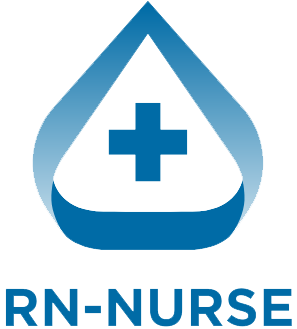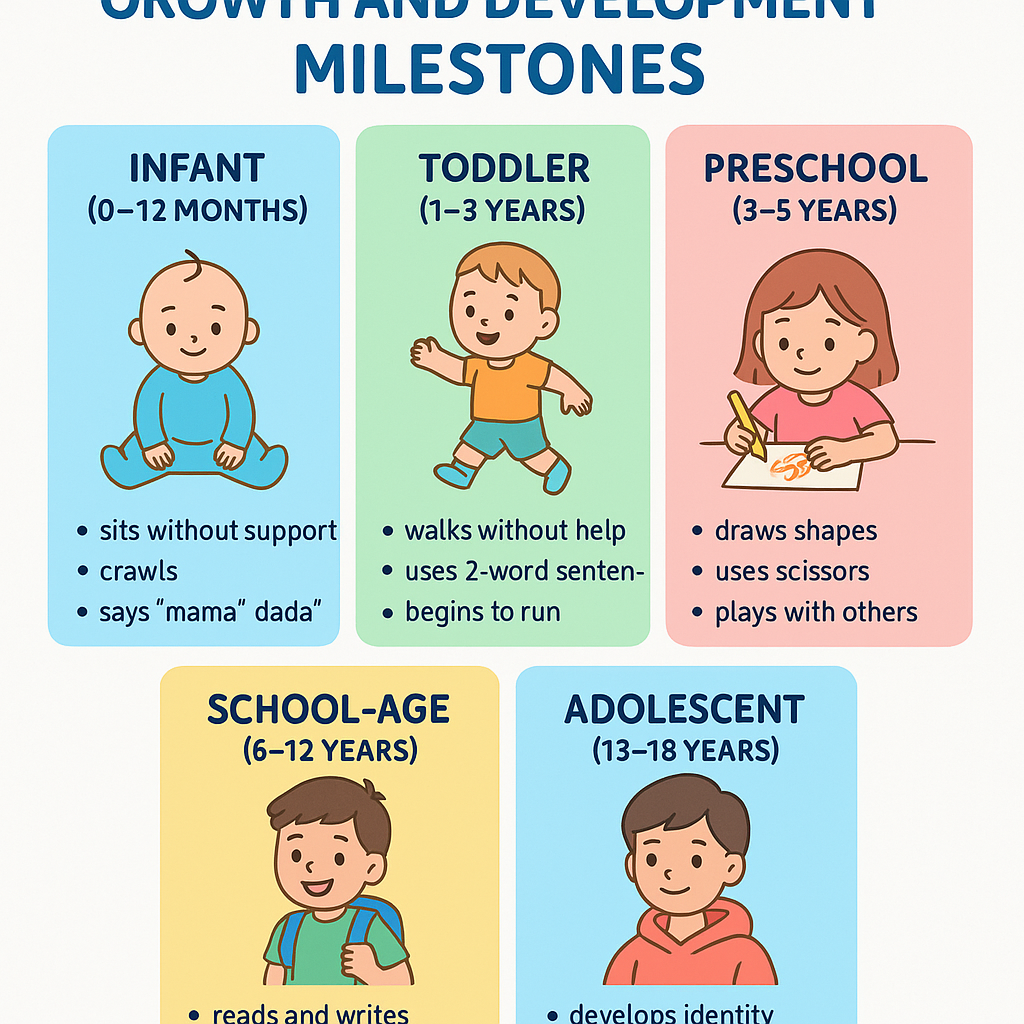As a nurse or nursing student, understanding growth and development milestones is essential for providing high-quality care, preparing for the NCLEX, and educating parents. Whether you’re a registered nurse (RN) in pediatrics, working in primary care, or studying in a nursing education program, this knowledge helps you identify normal versus delayed development and intervene early.
This guide breaks down the key milestones by age, gives you tips for NCLEX success, and offers practical tools for patient care.
✅ Why Are Growth and Development Milestones Important?
Monitoring milestones is a critical nursing role because they:
- Help identify developmental delays or disorders early.
- Provide parents with education on what to expect.
- Guide interventions for optimal health outcomes.
NCLEX Tip: Expect questions that test your ability to recognize when a milestone is normal or when it indicates a potential problem requiring follow-up.
🍼 Infant Milestones (0–12 Months)
Physical
- Birth weight doubles by 6 months and triples by 12 months.
- Sits unsupported around 6 months.
- Crawls by 9 months.
- Walks with help at 12 months.
Cognitive & Social
- Smiles socially at 6–8 weeks.
- Babbling starts around 4–6 months.
- Says first words near 12 months.
✔ Nurse Tip: For patient and family education, reassure parents that there is a range, but significant delays may require referral.
🚼 Toddler Milestones (1–3 Years)
Physical
- Walks independently by 15 months.
- Runs and climbs by age 2.
- Begins toilet training around age 2.
Cognitive & Language
- Uses 2–3 word phrases by 2 years.
- Understands simple instructions.
✔ RN Nurse Note: Use positive reinforcement for toilet training; avoid punishment.
👦 Preschool (3–5 Years)
- Hops on one foot, rides a tricycle.
- Uses full sentences; vocabulary expands rapidly.
- Engages in pretend play.
✔ NCLEX Alert: Know the concept of magical thinking in preschoolers.
🧒 School-Age (6–12 Years)
- Growth is slow and steady.
- Improved motor skills: writing, sports.
- Logical thinking develops.
✔ Nursing Role: Promote physical activity and healthy eating to prevent obesity.
🧑 Adolescents (13–18 Years)
- Rapid growth and puberty.
- Developing abstract thinking.
- Strong peer influence.
✔ Patient Education: Discuss safe behaviors, mental health, and healthy relationships.
✅ Key NCLEX Study Tips
- Memorize by age group: Infant, toddler, preschool, school-age, adolescent.
- Know red flags: Lack of head control by 4 months, no walking by 18 months, no speech by 2 years.
- Use nursing bundles like growth charts and developmental checklists in practice.
🩺 Nurse’s Role in Growth Monitoring
- Perform head-to-toe assessments and chart milestones.
- Educate parents on nutrition, play, and safety.
- Refer to specialists if developmental delays are suspected.
Summary Table: Major Milestones
| Age | Physical | Language |
|---|---|---|
| 6 months | Sits with support | Babbles |
| 12 months | Walks with help | First words |
| 2 years | Runs, kicks ball | 2-word phrases |
| 5 years | Skips, draws shapes | Full sentences |
Why This Matters for NCLEX & Practice
Understanding milestones is high-yield for NCLEX and essential for every registered nurse. Add this to your nursing bundle for quick reference during clinicals and exam prep.

